Cedar-apple rust
July 31, 2015
- Cedar–apple rust, Gymnosporangium juniperi-virginianae
- Cedar-hawthorn-rust, G. globosum
- Cedar-quince rust, G. clavipes
Hosts
These fungi require two different hosts to complete their development: an evergreen host (mainly junipers) and a rosaceous host.
Rosaceous hosts of rusts | ||
|---|---|---|
|
Cedar apple |
Cedar hawthorn |
Cedar quince |
|
|
|
Symptoms on junipers
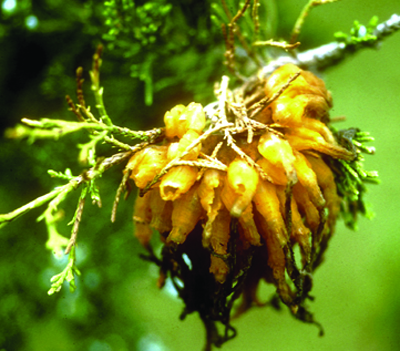
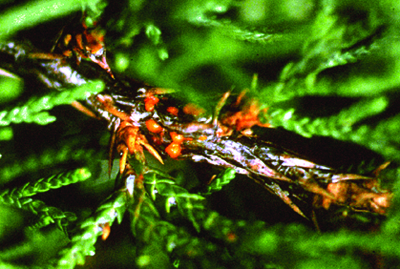
Gelatinous telia on junipers: (left) Cedar apple rust galls on twig; (right) Small galls of cedar-quince rust on twig.
How it’s spread
These rusts overwinter on their evergreen hosts and produce jelly-like masses of orange telia from perennial galls during warm, wet weather in spring. Telia give rise to a different type of airborne spore that infects members of the rose family.
Symptoms on rosaceous hosts
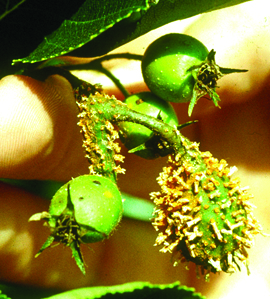
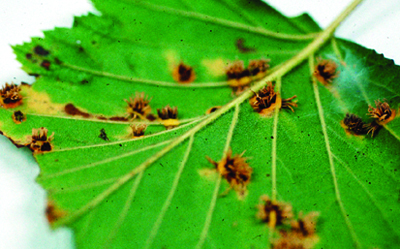
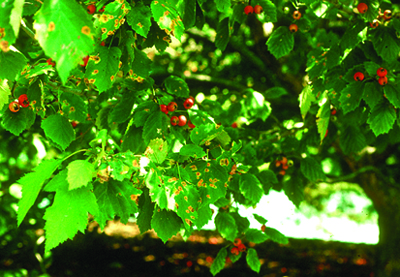
None of these rusts kill their hosts, but cedar quince rust is the most disfiguring, producing not only leaf spots, but deformed fruits and petioles and stem galls. Cedar apple and cedar hawthorn rusts produce similar rusty orange leafspot symptoms and premature leaf drop. ‘Cluster cups’ form on backs of leaves and form spores that are carried on the wind and infect only junipers
Management
Galls on junipers can be pruned off and destroyed before spore horns develop, but usually, only rosaceous hosts need protective fungicides. Apply labeled fungicides to broadleaf hosts as orange telial horns are first visible on juniper and repeat at several week intervals. Select resistant cultivars where possible when making new or replacement plantings.
Print a PDF of this page: Cedar-apple rust



 Print
Print Email
Email




